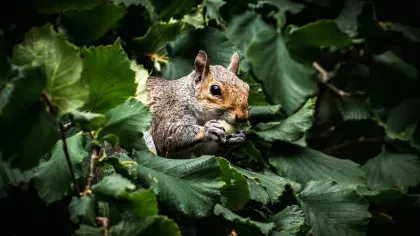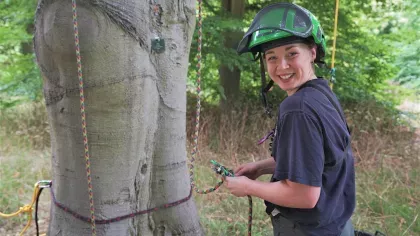8 November 2018
How Kew’s stunning WW1 seat was made
Delve behind the scenes to discover how Kew’s poignant Remembrance and Hope seat commemorating the First World War was created.

Now sitting strikingly in the Gardens is Kew’s beautiful new memorial bench marking 100 years since the end of the First World War (1914-1918).
Designed and made by Hampshire-based outdoor furniture makers, Gaze Burvill, the seat – evocatively named Remembrance and Hope – has a truly remarkable story...
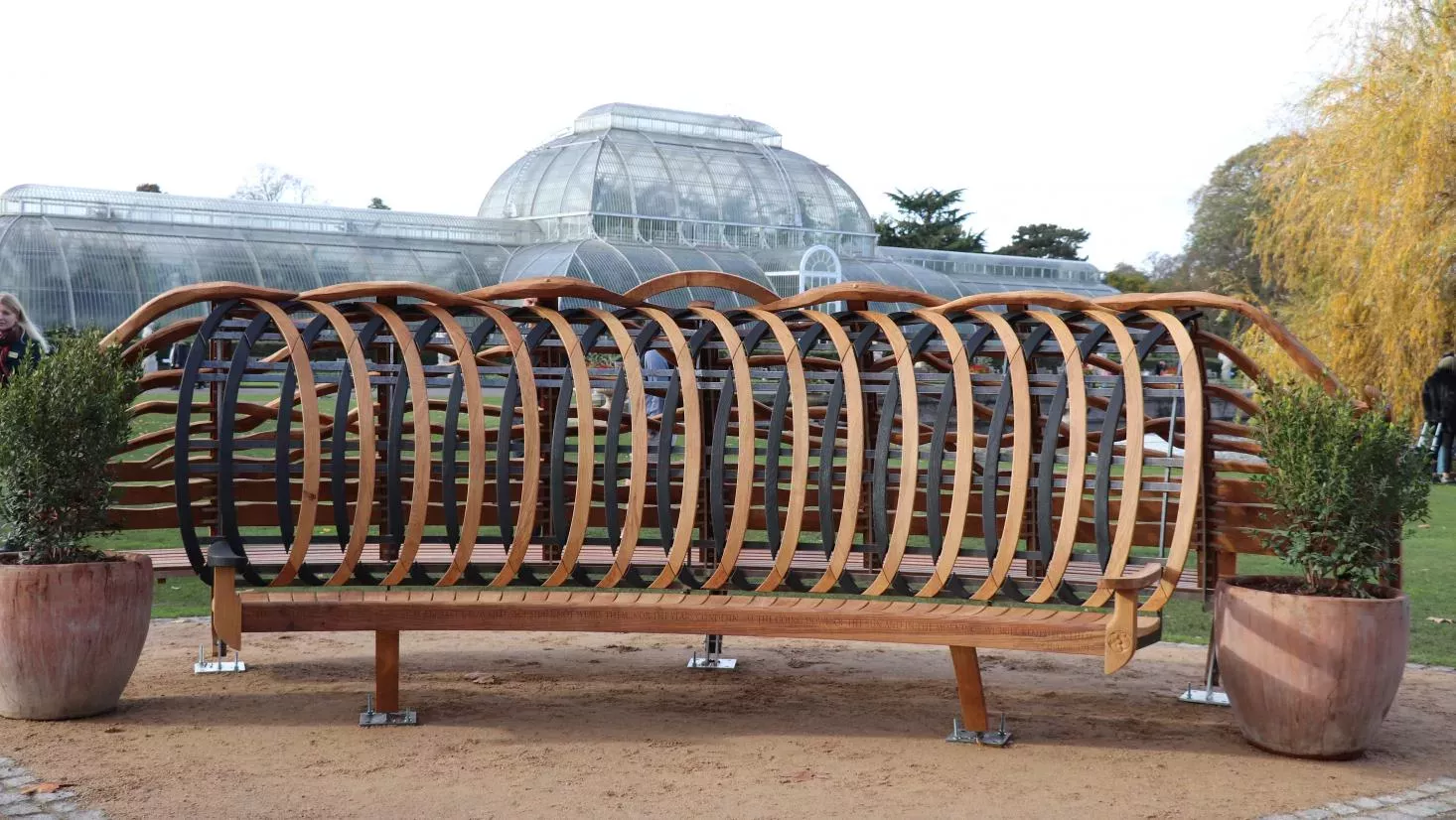
The origin of Kew's Verdun oak seat
This sculptural seat’s fascinating yet moving story began at the battlefield of Verdun, France, in 1917.
The Battle of Verdun was one of the longest and deadliest battles of the First World War, lasting from February to December 1916, between French and German soldiers.
An acorn dispersed from a sessile oak tree (Quercus petraea) was collected from the war-torn land and planted here at Kew in 1919.
In its new tranquil setting in our Gardens, the acorn flourished and grew into the stunning 'Verdun oak' tree, a living memorial to those who lost their lives at the battle.
Standing proud for almost a century near the Palm House Pond, things suddenly took a turn for the worst on 28 October 2013.
The severe St Jude’s Day storm caused devastation, damaging the oak so much, the tree, heartbreakingly, had to be felled.
But Kew’s Head of Arboretum, Tony Kirkham, didn't want the wonderful oak’s story to end there.
So he conceived the fitting idea of creating a commemorative outdoor seat made from the tree’s timber to mark the centenary of the end of the First World War.
Remembrance and Hope symbolism
The new bench is situated near the Palm House Pond on the corner of the panel lawn, just opposite the Temple of Arethusa, where Kew's war memorial plaque can be found.
As its name suggests, the towering commemorative seat comes in two parts – Remembrance and Hope.
The Remembrance part has an enveloping, contemplative form, and looks towards the Temple of Arethusa.
Its Corten frame has a looped design motif, partially in scorched oak, reminiscent of the First World War battle zones’ barbed wire.
The other side of the seat faces the Palm House, and, with its open, convex form, is outward looking and hopeful.
It features cut organic branch forms from the fallen Verdun oak, to represent the irrepressible regenerative power of nature.
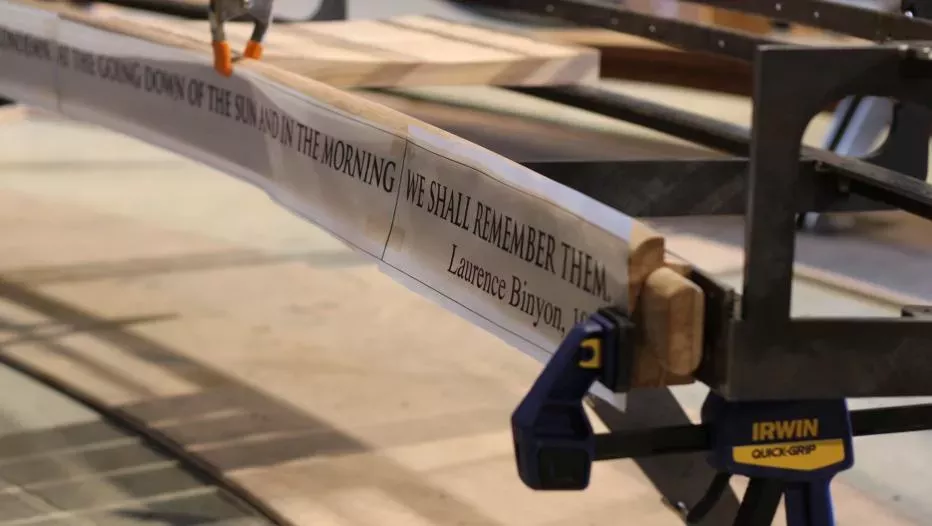
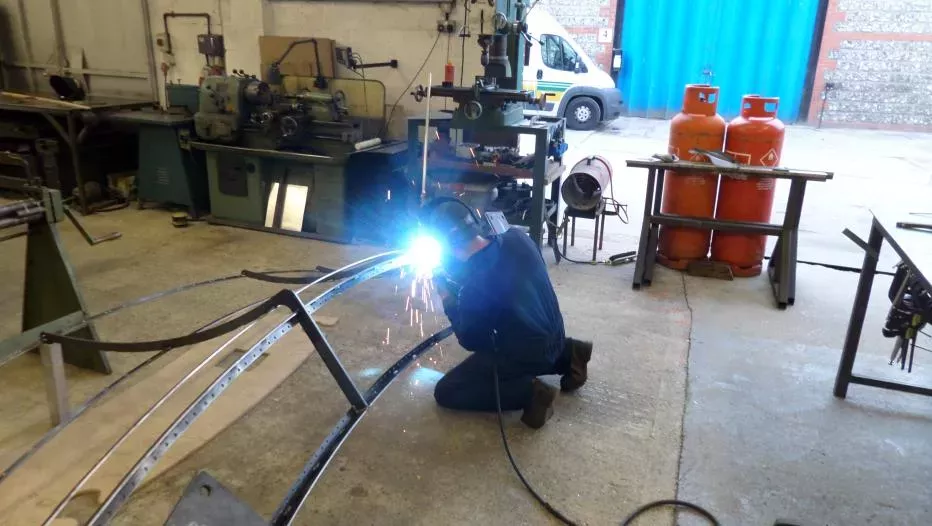
How the seat was made
From an initial design, multiple cardboard and MDF models were constructed and adjusted.
Once agreed on the form, the design team then translated the designs into CAD drawings which the cutting machines could read and accurately cut all the elements from the timber.
At the same time, drawings were sent to the metal workers to make the frame.
Curved elements like the seats on the Hope side and the front rails were steam bent by craftsmen.
The front rail was then sent to hand carver Kate Hanrahan, who skillfully incised the letters of the inscriptions into the wood.
A scorched motif was then added to parts of the Remembrance side.
The seat was fully assembled as a sort of dress rehearsal in Gaze Burvill's Flint Barn to check that everything fit together and last-minute adjustments were made.
After dismantling the seat, it was loaded into a vehicle and taken to its new permanent home here at Kew.
The team behind the seat
The design and creation of the seat involved an amalgamation of ideas and skills from many talented people...
Kew staff: Tony Kirkham, Richard Barley, our Head of Horticulture, and members of the Learning team
Gaze Burvill: Simon Burvill, Charlie Dedman, Harri Wood, Gemma Belk, Michael Simmonds
Timber expert: Geoff Tyler
Helmdon Sawmills: Steve Blackwell
Stainless steel and Corten frame: FD Metalwork
Hand carving on seat: Kate Hanrahan
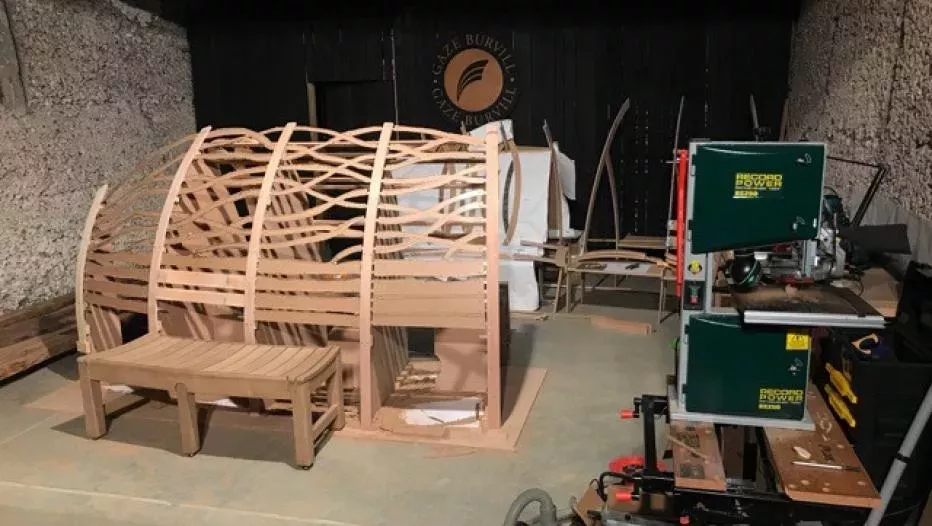
The other Verdun bench
Did you know the Remembrance and Hope seat isn't the only WW1 memorial seat at Kew Gardens?
Gaze Burvill also created the Verdun Bench – albeit by accident.
It was made from a wedge shape part of the Verdun oak which was left over when nails hidden in the tree's trunk broke the saw blade and called a halt to the cutting process.
Scorched on one side and with a brass plaque on the top commemorating the end of the Battle of Verdun, the seat was unveiled at Kew in 2016 and sits near the Temple of Aeolus.
Its unintentional 'V' shape fittingly represents the oak's origin at the battlefield of Verdun and pays tribute to the terrible losses suffered there.
If you’d like to pay your respects and commemorate the centenary of the end of the First World War, come and see our new ‘Remembrance and Hope’ seat near the Temple of Arethusa.
As a symbol of hope and to honour the soldiers of Verdun and the 37 Kew staff who lost their lives during the First World War, a young sapling grafted from the original Verdun oak tree has also been planted near the bench.

